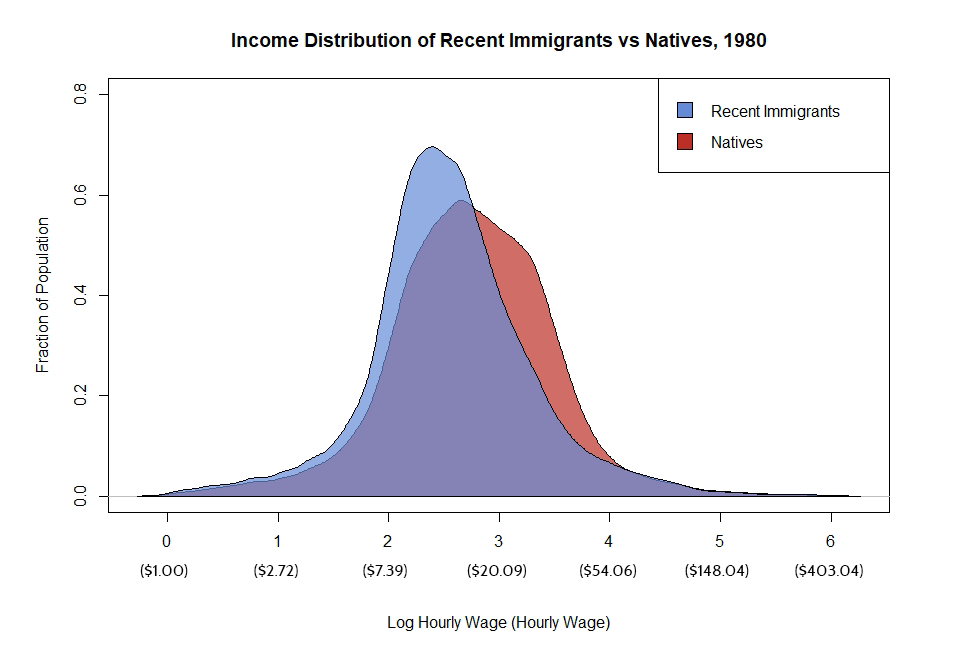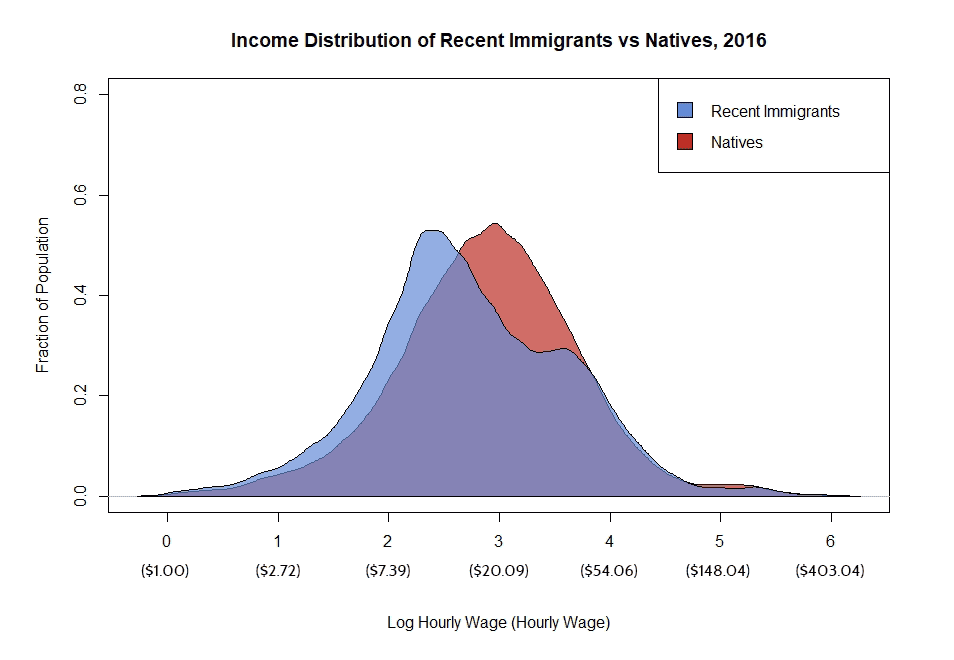The Daily Dish
October 19, 2018
Immigration and Inequality
Eakinomics: Immigration and Inequality
Inequality in the distribution of overall income and labor earnings is a perennial element of policy and political discussions. More recently, President Trump has shifted the debate by focusing on the role of immigrants, arguing that this “chain migration” attracts low-skilled immigrants who in turn increase labor-market competition and put downward pressure on native wages. He also argues that low-skilled immigration puts a higher burden on U.S. taxpayers by increasing the number of people receiving welfare benefits.
What are the facts regarding immigration and inequality? Fortunately, AAF’s Jacqueline Varas and Maximilian Maydanchik have a beautiful, clear analysis. The heart of the results are two pictures. The first shows the distribution of wages for native-born workers versus recent immigrants in 1980. As you can see, immigrants had a more tightly concentrated distribution with a peak below the corresponding distribution for the native born. Therefore, immigration brought in more lower-wage workers and widened the wage distribution overall. (Note: this ignores the feedback effects of immigration on the wage of the native born and vice-versa. But the earnings of the lowest-income native workers and immigrants have remained largely steady since 1980, even while the proportion of low-skilled immigrants has increased, suggesting that immigrants are not depressing wages.)
Now take a look at the same analysis in 2016. While the left-hand side looks similar, there is now a much greater concentration of high-earning immigrants and a second “peak” in the wage distribution, indicating a cluster of high-wage immigrants. The upshot is that the immigrant wage distribution now more closely resembles that of the native born. (And Varas and Maydanchik show that the longer immigrants are in the United States, the more the wage distributions converge.)
This change in the wage distribution reflects changing patterns of immigration — especially a rise in immigration from Asia. But the bottom line is that immigration has a small impact on the distribution of labor earnings — a far cry from the inflated political rhetoric.
Fact of the Day
54 percent of the new U.S. manufacturing jobs created within the past five years came from international companies.












